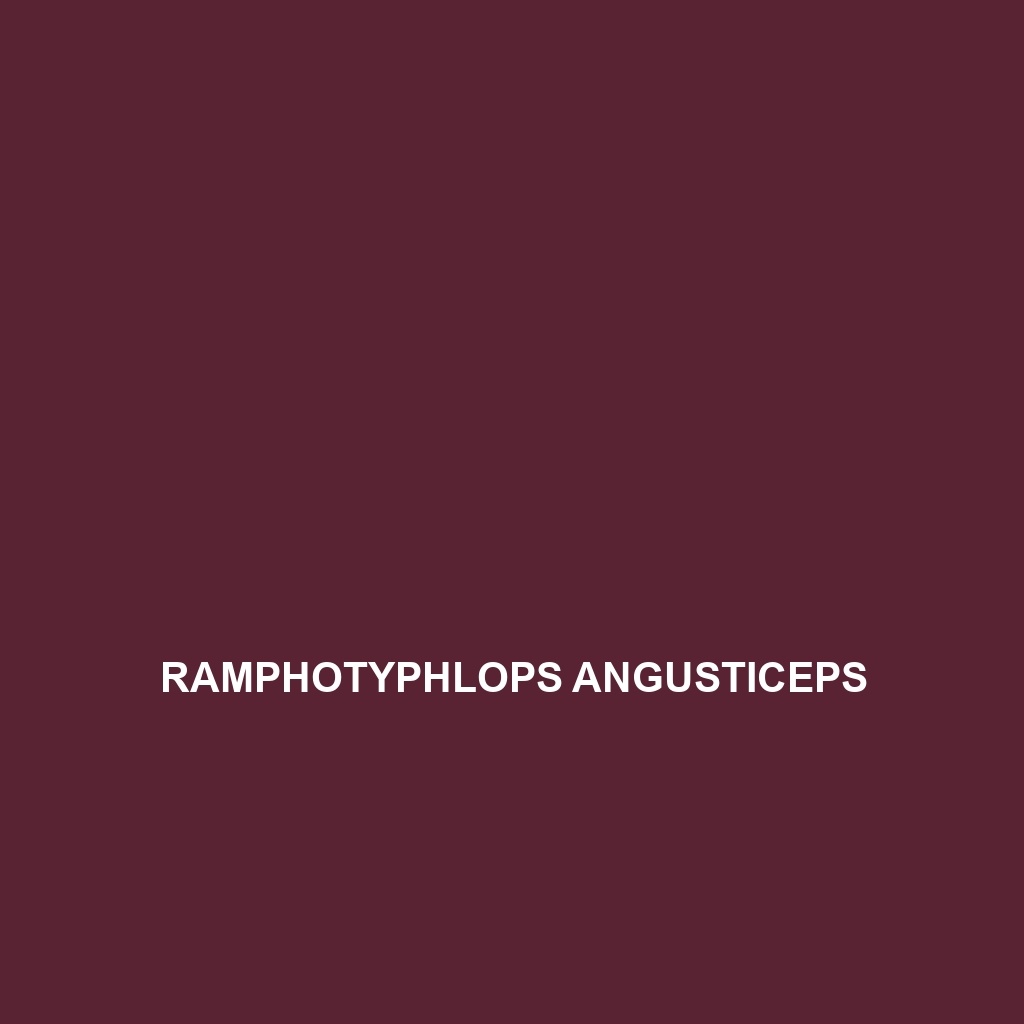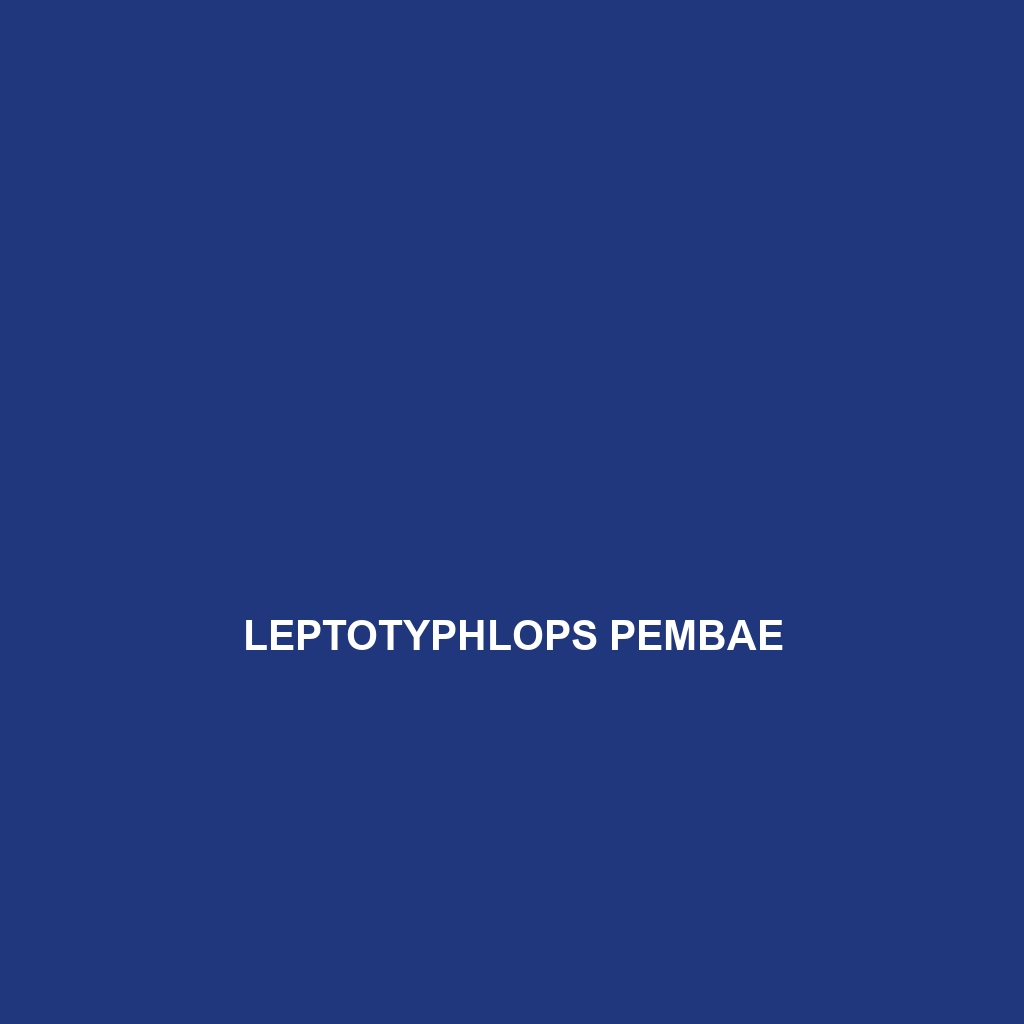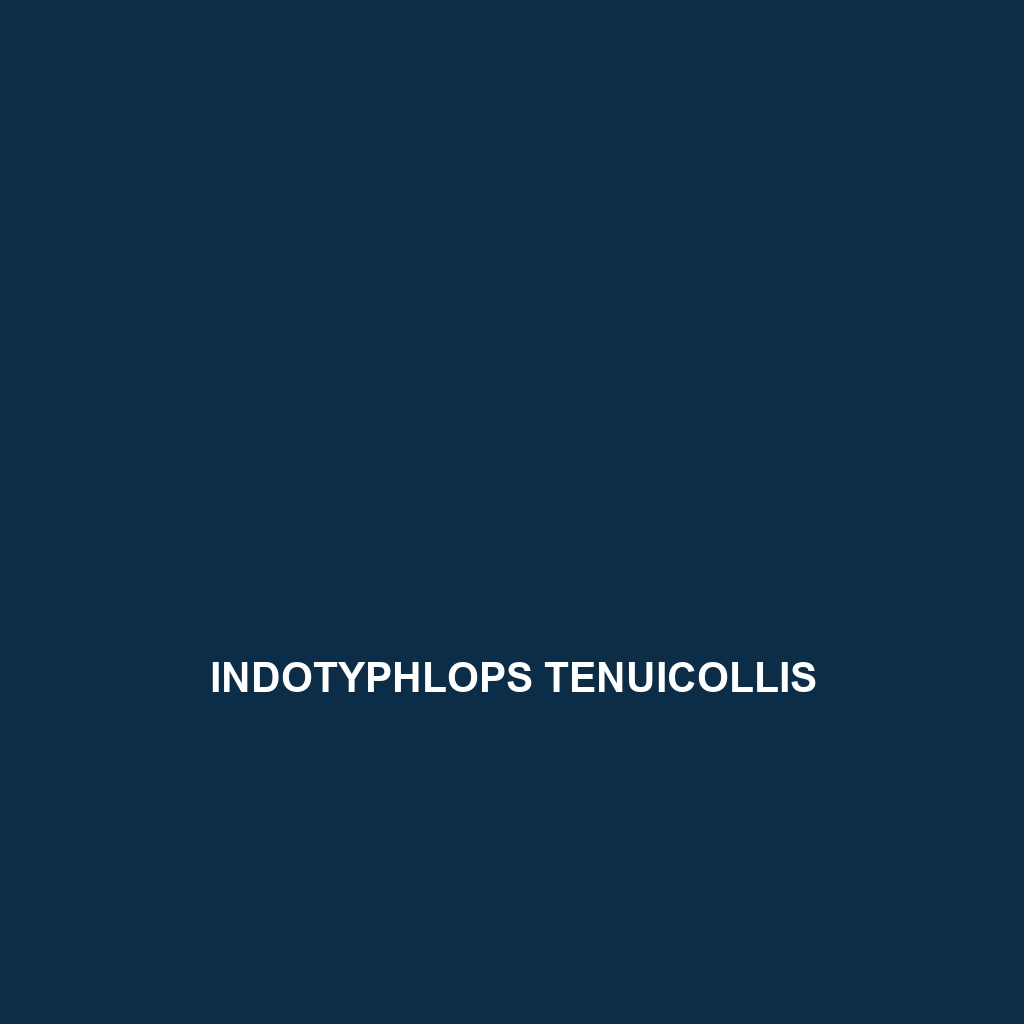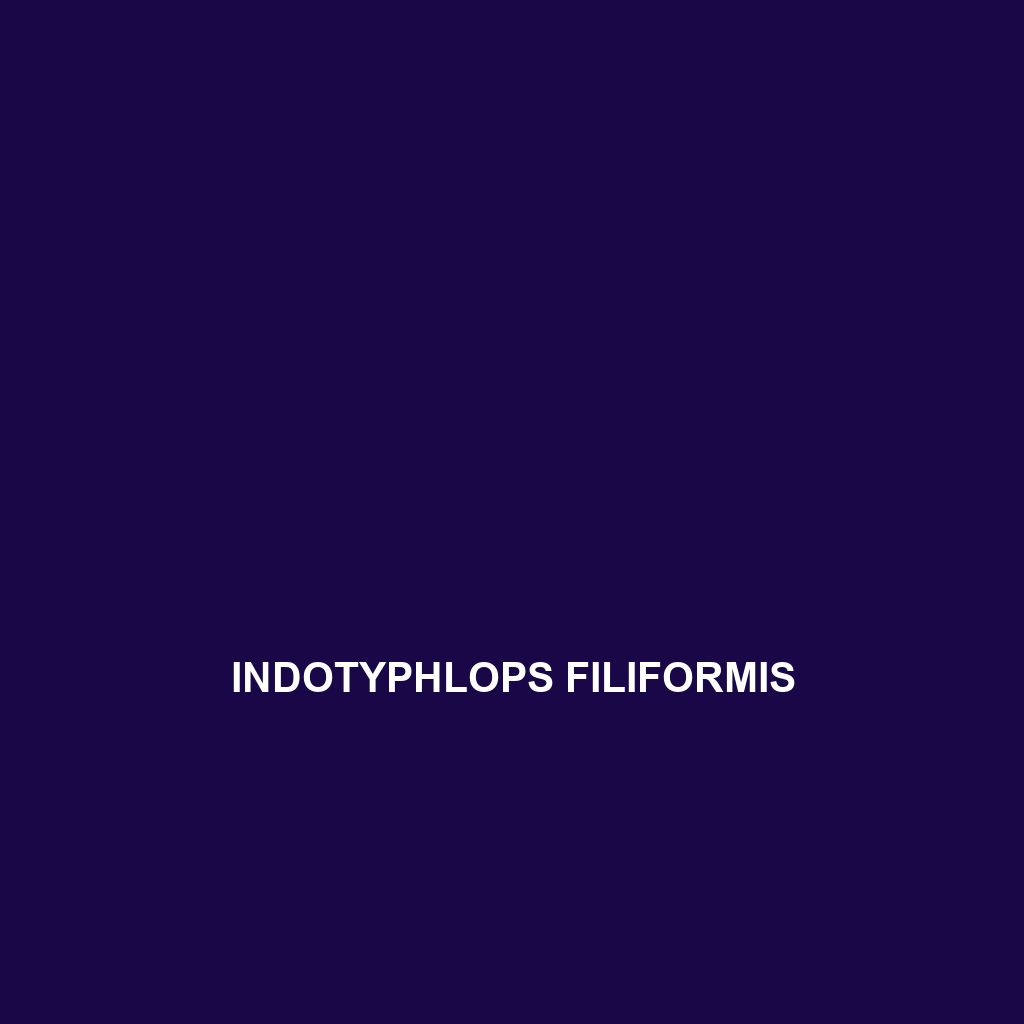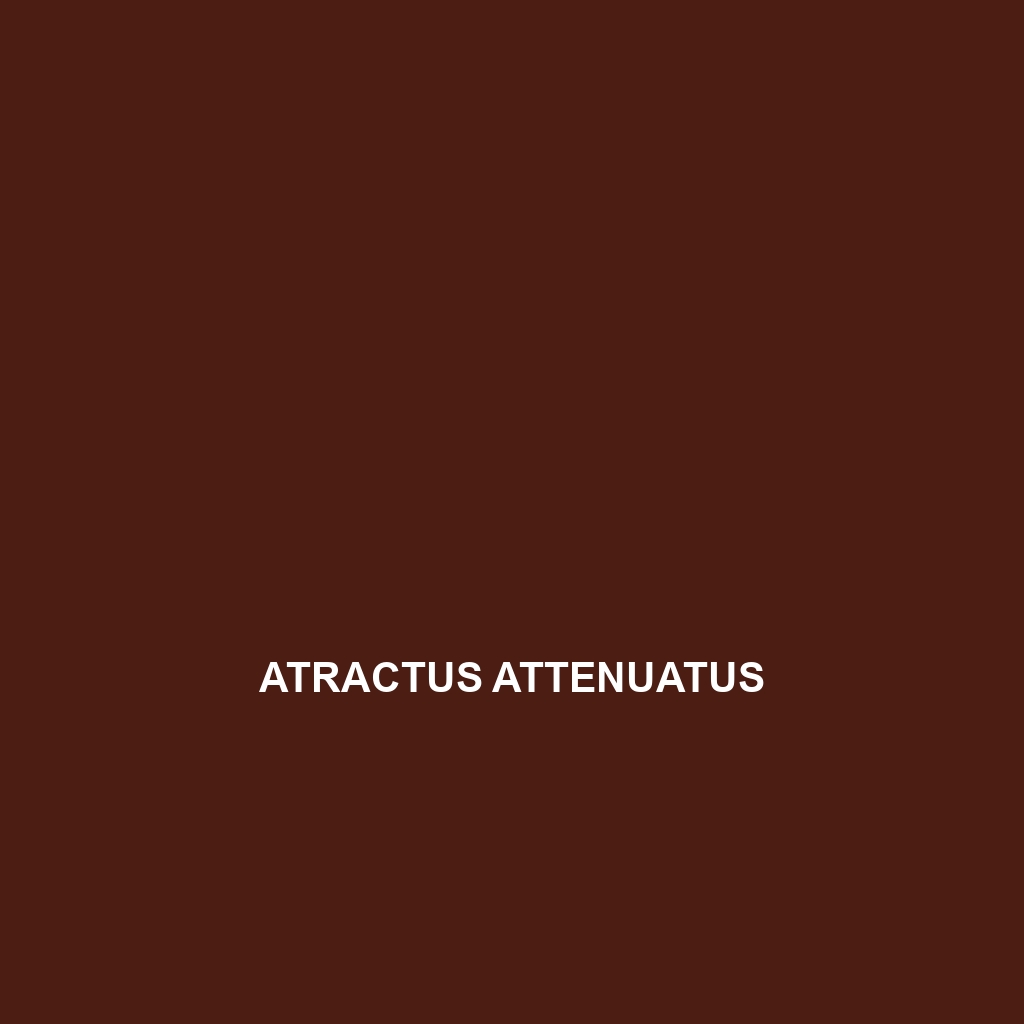Discover the Ramphotyphlops angusticeps, also known as the slender blind snake, a nocturnal insectivore found in tropical regions, particularly in Southeast Asia. With an elongated body, rudimentary eyes, and a specialized diet of ants and termites, this elusive species plays a vital role in maintaining ecological balance by regulating invertebrate populations.
Tag: Slender blind snake
Pseudoindotyphlops exiguus
<strong>Pseudoindotyphlops exiguus</strong>, commonly known as the slender blind snake, thrives in the tropical and subtropical regions of Southeast Asia, featuring a smooth, cylindrical body that reaches 20-30 cm in length. Primarily nocturnal and fossorial, this insectivorous species excels at hunting ants and termites in its humid forest habitat, contributing significantly to soil aeration and ecosystem balance.
Ramphotyphlops angusticeps
Discover the Ramphotyphlops angusticeps, also known as the slender blind snake, a nocturnal insectivore found in tropical regions, particularly in Southeast Asia. With an elongated body, rudimentary eyes, and a specialized diet of ants and termites, this elusive species plays a vital role in maintaining ecological balance by regulating invertebrate populations.
Pseudoindotyphlops exiguus
<strong>Pseudoindotyphlops exiguus</strong>, commonly known as the slender blind snake, thrives in the tropical and subtropical regions of Southeast Asia, featuring a smooth, cylindrical body that reaches 20-30 cm in length. Primarily nocturnal and fossorial, this insectivorous species excels at hunting ants and termites in its humid forest habitat, contributing significantly to soil aeration and ecosystem balance.
Leptotyphlops pembae
<p><b>Leptotyphlops pembae</b>, also known as the slender blind snake, is a small, fossorial snake found in tropical rainforests and savannas, characterized by its slender body, reduced eyes, and a diet primarily consisting of insects. This nocturnal predator plays a crucial role in regulating insect populations while contributing to soil aeration and maintaining ecological balance.</p>
Indotyphlops tenuicollis
Discover the Indotyphlops tenuicollis, or slender blind snake, a unique fossorial species thriving in humid tropical rainforests and savannas. With a smooth, elongated body measuring 20 to 25 cm and vestigial eyes, this insectivore plays a vital role in its ecosystem by controlling invertebrate populations and aerating the soil.
Indotyphlops filiformis
Discover the <b>Indotyphlops filiformis</b>, or slender blind snake, a small, nocturnal insectivore native to tropical and subtropical rainforests in Southeastern Asia. This fascinating species features a sleek, smooth body, measures 30 to 60 cm in length, and plays a vital role in maintaining ecological balance by controlling insect populations and aerating the soil through its burrowing behavior.
Holcosus parvus
<p><b>Holcosus parvus</b>, known as the slender blind snake, is a small, non-venomous reptile found in the temperate forests and savannas of Central America, measuring 30 to 50 centimeters in length. This nocturnal predator plays a vital role in its ecosystem by controlling invertebrate populations while thriving in moist, organic-rich habitats.</p>
Epictia tenella
The Epictia tenella, or slender blind snake, is a small, fossorial species native to Central and South America, characterized by its smooth, glossy scales and reduced eyes. This carnivorous snake primarily feeds on soft-bodied invertebrates and plays a vital role in controlling their populations while thriving in humid, leaf-litter-rich environments.
Atractus attenuatus
Discover the Atractus attenuatus, or slender blind snake, a fascinating fossorial species native to the humid lowland forests of Central and South America, characterized by its elongated body, shiny scales, and diet of small invertebrates. This non-venomous snake plays a vital role in its ecosystem by regulating invertebrate populations and enhancing soil health through burrowing activities.
